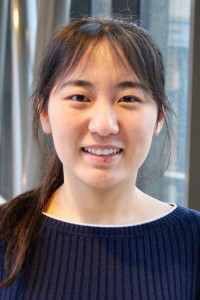Postdoc

My research is mainly focussed on the glycosylation changes mediated by TGF-β and during TGF-β-induced epithelial to mesenchymal transition (EMT) in pancreatic cancer, lung cancer, breast cancer and normal breast cells. In SMAD4-dificient pancreatic cancer PaTu-S cell line, we provided a comprehensive analysis of TGF-β-induced N-glycan, O-glycan and glycosphingolipid (GSL) -glycan patterns using PGC nano-LC-ESI-MS/MS in negative electrospray ionization mode with the combination qRT-PCR analysis of glycotransferase related genes. TGF-β treatment primarily induced N-glycome aberrations involving elevated levels of branching, core fucosylation, and sialylation in PaTu-S cells, in line with TGF-β-induced changes in the expression of glycosylation-related genes. In addition, we observed differences in O- and GSL-glycosylation profiles after TGF-β treatment, including lower levels of sialylated Tn antigen, and neoexpression of globosides. Furthermore, SOX4 expression was upregulated upon TGF-β stimulation, and its depletion blocked the TGF-β-induced N-glycomic changes.
In breast epithelial-like NMuMG cells, we showed that GSLs were decreased by TGF-β stimulation, in line with the downregulation of GSL-related genes including the UGCG, B4GALNT1, B4GALT6 and ST3GAL5. Therefore, we knocked out UGCG, which is the key enzyme in glycosphingolipids synthesis, in NMuMG cells to investigate the role of UGCG in TGF-β signaling. The results showed that UGCG KO could promote the TGF-β signaling, TGF-β-induced EMT and cell migration in vitro. We further isolated lipid rafts using sucrose gradient ultracentrifugation and found the expression of TGF-β receptors in lipid raft fractions was decreased in NMuMG cells with UGCG deletion. Similar experiment was also done in lung cancer A549-VIM-RFP cells by using the UGCG inhibitor Eliglustat. The data showed that the UGCG inhibitor can promote TGF-β signaling, TGF-β-induced EMT and cell migration by downregulating the TβRI expression in lipid rafts. In addition, UGCG inhibitor induced the promotion of invasive A549-VIM-RFP cells in vivo, which can be blocked by TGF-β receptor kinase Inhibitor-SB505124.
One of my projects is the “Opposite roles of deubiquitinase USP19 isoforms in regulating TGF-β signaling”. The USP19 expressed as two isoforms in cells. One is the cytosolic isoform, which localizes in cytoplasm. Another one is ER isoform, which contains a c-terminal transmembrane domain and localizes it to ER. We found these two isoforms play opposite roles in TGF-β signaling. The cytosolic isoform promoted the TGF-β signaling, TGF-β-induced EMT, cell migration and invasion, which dependent on its enzyme activity. Further mechanism studies showed that the USP19-CYTO isoform binds to TβRI and deubiquitinates the type I receptor, which results in the stabilization of receptors. While the ER isoform inhibited TGF-β signaling, TGF-β-induced EMT, cell migration and invasion, which independent on its catalytic enzyme activity. We found that the USP19-TM isoform specifically binds to SMAD7 and induces SMAD7 translocated from nucleus to cytoplasm. But the molecular mechanisms still need further investigations.
Jing Zhang , Peter ten Dijke#, Manfred Wuhrer , Tao Zhang
Protein Cell. 2021 Feb;12(2):89-106. doi: 10.1007/s13238-020-00741-7.
Jing Zhang, Midory Thorikay, Gerard van der Zon, Maarten van Dinther, Peter Ten Dijke#
J Vis Exp. 2020 Oct 27;(164). doi: 10.3791/61830
Chuannan Fan*, Jing Zhang*, Wan Hua, Peter ten Dijke
Encyclopedia of Cancer, Pages 455-470
Looking for information on one of our topics, a new place to conduct your research or experienced research to join forces with? Feel free to contact us.!